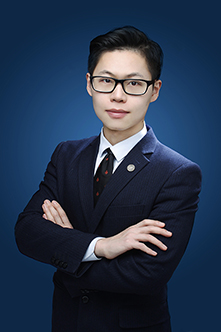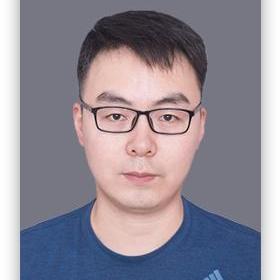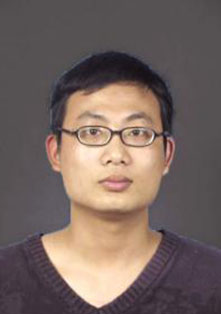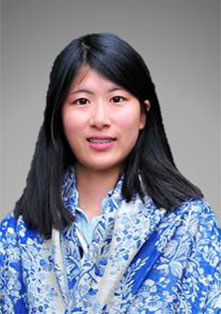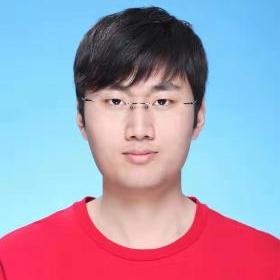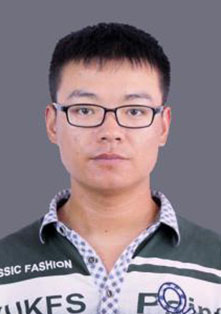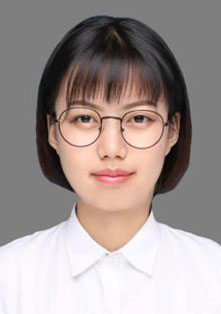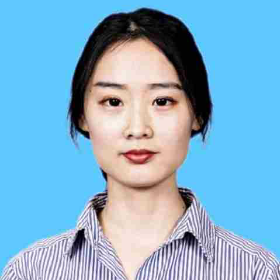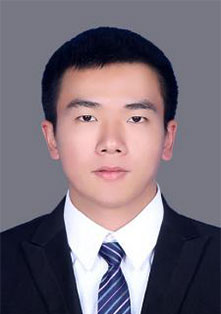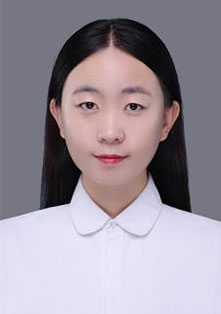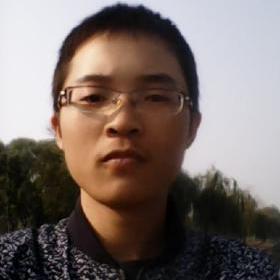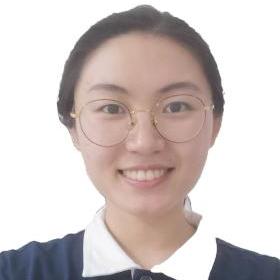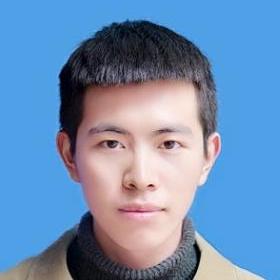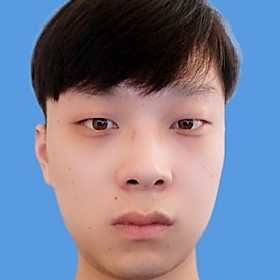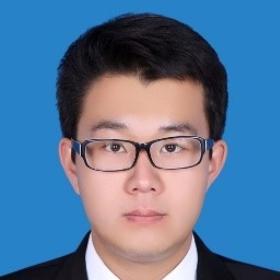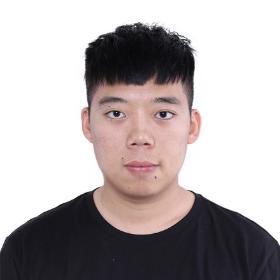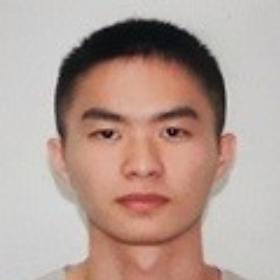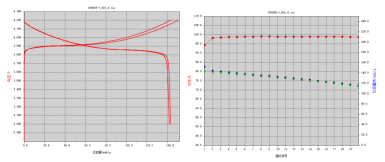Patents
Chinese Invention Patents: 26
American Invention Patents: 3
PCT/International Invention Patents: 3
Papers
“*”Corresponding author ; “#”Co-first author
2022
Solid state ionics - selected topics and new directions
F. Wu, L. Liu, S. Wang, J. Xu, P. Lu, W. Yan, J. Peng, D. Wu, H. Li*
Progress in Materials Science (IF=48.165), 2022, 126,100921.
https://doi.org/10.1016/j.pmatsci.2022.100921
Progress in Solvent-Free Dry-Film Technology for Batteries and Supercapacitors
Y. Li, Y. Wu, Z. Wang, J. Xu, T. Ma, L. Chen, H. Li*, F. Wu*
Materials Today (IF=31.041), 2022, 55,92-109.
https://doi.org/10.1016/j.mattod.2022.04.008
Long-Life Lithium-Metal All-Solid-State Batteries and Stable Li Plating Enabled by In-situ Formation of Li3PS4 in SEI Layer
J. Xu, J. Li, Y. Li, M. Yang, L. Chen, H. Li, F. Wu*
Advanced Materials(IF=32.086), 2022, in press.
DOI:10.1002/adma.202203281
Air Stability of Sulfide Solid-state Batteries and Electrolytes
P. Lu#, D. Wu#, L. Chen, H. Li*, F. Wu*
Electrochemical Energy Reviews (IF=32.804), 2022, accepted.
Improving Thermal Stability of Sulfide Solid Electrolytes: An Intrinsic Theoretical Paradigm
S. Wang, Y. Wu, H. Li, L. Chen, F. Wu*
Infomat(IF=25.405)2022, 212316.
Improving thermal stability of sulfide solid electrolytes: An intrinsic theoretical paradigm - Wang - - InfoMat - Wiley Online Library
Interfacial and Cycle Stability of Sulfide All-Solid-State Batteries with Ni-Rich Layered Oxide Cathodes
J. Wang, Z. Zhang, J. Han, X. Wang, L. Chen, H. Li, F. Wu*
Nano Energy (IF=19.069), 2022, 107528.
Interfacial and Cycle Stability of Sulfide All-Solid-State Batteries with Ni-Rich Layered Oxide Cathodes - ScienceDirect
Doping Strategy and Mechanism for Oxide and Sulfide Solid Electrolytes with High Ionic Conductivity
Y. Wang, Y. Wu, Z. Wang, L. Chen, H. Li*, F. Wu*
Journal of Materials Chemistry A (IF=14.511), 2022, 10, 4517 - 4532
Air/water Stability Problems and Solutions for Lithium Batteries
M. Yang, L. Chen, H. Li*, F. Wu*
Energy Materials Advances, 2022, accepted.
Stable Ni-rich layered oxide cathode for sulfide all-solid-state lithium battery
Y. Wang, Z. Wang, D. Wu, Q. Niu, P. Lu, T. Ma, Y. Su, L. Chen, H. Li, F. Wu*
eScience,2022, accepted.
Stable Ni-rich layered oxide cathode for sulfide all-solid-state lithium battery - ScienceDirect
Progress in Lithium Thioborate Superionic Conductors
X. Zhu, Z. Zhang, L. Chen, H. Li. Fan Wu*
Journal of Materials Research (invited paper), 2022, accepted.
https://doi.org/10.1557/s43578-022-00592-4
Liquid-phase Synthesis of Li2S and Li3PS4 with Lithium-based Organic Solutions
J. Xu, Q. Wang, W. Yan, L. Chen, H. Li. F. Wu*
Chinese Physics B, 2022, accepted.
Liquid-phase Synthesis of Li2S and Li3PS4 with Lithium-based Organic Solutions - IOPscience
2021
Superior all-solid-state batteries enabled by gas-phase synthesized sulfide electrolyte with ultra-high moisture stability and ionic conductivity.
P. Lu, L. Liu, S. Wang, J. Xu, J. Peng, W. Yan, Q. Wang, H. Li, L. Chen, F. Wu*.
Advanced Materials(IF=32.086), 2021, 2100921.
https://doi.org/10.1002/adma.202100921
Water-Stable Sulfide Solid Electrolyte Membranes Directly Applicable in All-Solid-State Batteries Enabled by Superhydrophobic Li+-conducting Protection Layer
J. Xu, Y. Li, P. Lu, W. Yan, H. Li, L. Chen, F. Wu*.
Advanced Energy Materials(IF=29.698), 2021, 2102348.
Water‐Stable Sulfide Solid Electrolyte Membranes Directly Applicable in All‐Solid‐State Batteries Enabled by Superhydrophobic Li+‐Conducting Protection Layer - Xu - - Advanced Energy Materials - Wiley Online Library
High Current Density and Long Cycle Life Enabled by Sulfide Solid Electrolyte and Dendrite-Free Liquid Lithium Anode
J. Peng, D. Wu, F. Song, S. Wang, Q. Niu, J. Xu, P. Lu, H. Li, L. Chen, F. Wu*.
Advanced Functional Materials(IF=19.924), 2021, 2105776.
High Current Density and Long Cycle Life Enabled by Sulfide Solid Electrolyte and Dendrite‐Free Liquid Lithium Anode
5V-Class Sulfurized Spinel Cathode Stable in Sulfide All-Solid-State Batteries
Y. Wang, Y. Lv, Y. Su, L. Chen, H. Li, F. Wu*.
Nano Energy (IF=19.069), 2021, 90,106589.
https://doi.org/10.1016/j.nanoen.2021.106589
Progress in Thermal Stability of All-Solid-State-Li-Ion-Batteries
Y. Wu#, S. Wang#, H. Li, L. Chen, F. Wu*.
Infomat(IF=25.405), 2021, 1-27 (Cover Image)
https://doi.org/10.1002/inf2.12224
Application of Si-based Anodes In Sulfide Solid-State Batteries.
W. Yan, F. Wu*, H. Li, L. Chen.
Energy Storage Science and Technology, 2021, 10(3): 821-835.
Application of Si-based anodes in sulfide solid-state batteries (energystorage-journal.com)
Before 2021
Advanced sulfide solid electrolyte by core-shell structural design
F. Wu #, W. Fitzhugh #, L. Ye, J. Ning, X. Li *
Nature Communications, (2018) 9:4037.
Advanced sulfide solid electrolyte by core-shell structural design | Nature Communications
A high‐throughput search for functionally stable interfaces in sulfide solid‐state lithium ion conductors
W. Fitzhugh #, F. Wu #, L. Ye, W. Deng, P. Qi, X. Li *
Advanced Energy Materials, 1900807.
A High‐Throughput Search for Functionally Stable Interfaces in Sulfide Solid‐State Lithium Ion Conductors - Fitzhugh - 2019 - Advanced Energy Materials - Wiley Online Library
Strain‐stabilized ceramic‐sulfide electrolytes.
W. Fitzhugh #, F. Wu #, L. Ye #, H. Su, X. Li *
Small, 1901470.
Strain‐Stabilized Ceramic‐Sulfide Electrolytes - Fitzhugh - 2019 - Small - Wiley Online Library
Practical evaluation of energy densities for sulfide solid-state batteries
L. Liu #, J. Xu #, S. Wang, F. Wu *, H. Li *, L. Chen
eTransportation, 2019, 1: 100010.
Practical evaluation of energy densities for sulfide solid-state batteries - ScienceDirect
Liquid-involved synthesis and processing of sulfide-based solid electrolytes, electrodes and all-solid-state batteries
J. Xu, L. Liu, N. Yao, F. Wu *, H. Li *, L. Chen
Materials Today Nano, 2019: 100048.
Liquid-involved synthesis and processing of sulfide-based solid electrolytes, electrodes, and all-solid-state batteries - ScienceDirect
Advances in Electrochemical Stability of Sulfide Solid-state Electrolyte
Liu, Lilu, Fan Wu, Hong Li, and Liquan Chen.
Journal of the Chinese Ceramic Society 2019, 47: 1367–1385.
In-situ synthesis and defect evolution of single-crystal piezoelectric nanoparticles
F. Wu *, N. Yao *
Nano Energy 28 (2016) 195–205.
Advances in windowed gas cells for in-situ TEM studies
F.Wu *, N. Yao *
Nano Energy, 2015, 13, 735-756.
Advances in sealed liquid cells for in-situ TEM electrochemial investigation of lithium-ion battery
F. Wu *, N. Yao *
Nano Energy, 2015, 11, 196-210.
Tuning exchange bias in epitaxial Ni/MgO/TiN heterostructures integrated on Si(100).
F.Wu *, SS Rao, JT Prater, J. Narayan
Current Opinion in Solid State and Materials Science, 2014, 18 (5), 279-285.
Macroscopic twinning strain in nanocrystalline Cu.
F. Wu, Y.T. Zhu *, J. Narayan *
Materials Research letters, 2013, 2 (2), 63-69.
Nanoscale electrical properties of epitaxial Cu3Ge film
F. Wu *, W.Cai, N. Yao
Scientific Reports, 2016, 6, 28818.
Energy scavenging based on a single-crystal PMN-PT nanobelt
F. Wu *, W. Cai, Y. Yeh, S. Xu, N. Yao *
Scientific Reports, 2016, 6, 22513.
Controlled epitaxial growth of bcc and fcc Cu on MgO for integration on Si
F. Wu *, J. Narayan
Crystal Growth & Design, 2013, 13 (11), 5018–5024.
PMN-PT nanostructures for energy scavenging
F. Wu *, N. Yao *
Semiconductor Science and Technology, 2017. 32 (6), 063001.
Work function of Cu3Ge thin film
F. Wu *, N. Yao *
Microscopy and Microanalysis 2016, 22 (S3), 1654-1655.
Fabrication of epitaxial Cu3Ge on sapphire with controlled crystallinity and planar defects
F. Wu *, J.K. Zheng, W. Cai, N. Yao *, Y.T. Zhu, J. Narayan
Journal of Alloys and Compounds, 2015, 641, 238-243.
Twin intersection mechanisms in nanocrystalline fcc metals
F. Wu, H.M. Wen, E.J. Lavernia, J. Narayan *, Y.T. Zhu
Materials Science and Engineering: A, 2013, 585 (0), 292-296.
Grain size effect on twin density in as-deposited nanocrystalline Cu film
F. Wu *, Y.T. Zhu, J. Narayan
Philosophical Magazine, 2013, 93 (35), 4355-4363.
Nanoelectronics and Materials Development, ISBN 978-953-51-4734-3, Book edited by Dr. Abhijit Kar
F. Wu *, N. Yao *
publisher: INTECH.
Microscopy and Analysis, ISBN 978-953-51-4723-7, Book edited by: Stefan Stanciu
F. Wu *, N. Yao *
publisher: INTECH.
Reversible flat to rippling phase transition in fe containing layered battery electrode materials
X. Chen, S. Hwang, R. Chisnell, Y. Wang, F. Wu, S. Kim, J. W. Lynn, D. Su, and X. Li *
Advanced Functional Materials, 2018, 1803896
Defects in thin-film heterostructured materials (invited review)
F. Wu
Nanoscience & Nanotechnology-Asia, 2018, Accepted.
A combination of theory and experiment achieving rational design of electrocatalysts for water reduction on hierarchically porous CoS2 microsphere.
A. Wang, M. Zhang, H. Li, F. Wu, K. Yan * and J. Xiao *
Under review.
A novel dual phase membrane 40 wt% Nd0.6Sr0.4CoO3−δ 60 wt%Ce0.9Nd0.1O2−δ: design, synthesis and properties
H. Yuan, S. Lei, F. Wu, S. Wang, D. Yan, P. Liu, Man-Rong Li, J. Caro *and H. Luo *
Journal of Materials Chemistry A, 2017, 6 (1), 84-92.
In situ preparation of metal halide perovskite nanocrystal thin films for improved light-emitting devices
L. Zhao, Y.W. Yeh, N. L. Tran, F. Wu, Z. Xiao, R.A. Kerner, Y.H. L. Lin, G.D. Scholes, N. Yao, B.P. Rand *
ACS Nano, 2017.11(4), 3957.
Photoluminescence of functionalized germanium nanocrystals embedded in arsenic sulfide glass
Gu, J. Gao, E. Ostroumov, H. Jeong, F. Wu, R. Fardel, N. Yao, R.D. Priestley, G.D. Scholes, Yueh-Lin Loo and C.B. Arnold *
ACS Appl. Mater. Interfaces, 20170509, online
Anisotropic crystallization in solution processed chalcogenide thin film by linearly polarized laser
T. Gu, H. Jeong, K. Yang, F. Wu.
Applied Physics Letters, 2017, 110 (4), 041904
Atomic scale visualization of quantum interference on a weyl semimetal surface by scanning tunneling microscopy
Zheng, S.-Y. Xu, G. Bian, C. Guo, G. Chang, D. S. Sanchez, I. Belopolski, C.-C. Lee, S.-M. Huang, X. Zhang, R. Sankar, N. Alidoust, T.-R. Chang, F. Wu, T. Neupert, F. Chou, H. -T. Jeng, N. Yao, A. Bansil, S. Jia, H. Lin, M. Z. Hasan*.
ACS Nano, 2016, 10 (1), 1378.
Ferromagnetic oxide heterostructures on silicon
S.S. Rao*, J. T. Prater, F. Wuand, J. Narayan
MRS Communications, 2016, 6, 234–240
Strain induced room temperature ferromagnetism in epitaxial magnesium oxide thin films
Jin, S. Nori, Y.F. Lee, D. Kumar, F. Wu, J. T. Prater, K.W. Kim, and J. Narayan *
Journal of Applied Physics, 2015, 118, (16), 165309.
The (0001) surfaces of α-Fe2O3 nanocrystals are preferentially activated for water oxidation by Ni doping
Zhao, F. Wu, C. X. Kronawitter, Z. Chen, N. Yao and B. E. Koel *
Physical Chemistry Chemical Physics, 2015, 17, (40), 26797-26803.
Complete vertical M-H loop shift in La0.7Sr0.3MnO3/SrRuO3 thin film heterostructures
S. S. Rao *, F. Wu, J. T. Prater1 and J. Narayan
Journal of Applied Physics, 2015, 117, 17B711.
Dependence of semiconductor to metal transition of VO2(011) /NiO{100} /MgO{100} /TiN{100} /Si{100} heterostructures on thin film epitaxy and nature of strain
M. R. Bayati *, R. Molaei, F. Wu, J. Narayan, S. Yarmolenko
Journal of the American Ceramic Society, 2015, 98, (4), 1201-1208.
Positive exchange bias in epitaxial permalloy/MgO integrated with Si (100)
S. S. Rao *, J.T. Prater, F. Wu, S. Nori, D. Kumar, L. Yue, S.-H. Liou, J. Narayan
Current Opinion in Solid State and Materials Science, 2014, 18 (3), 140.
Magnetic properties of BaTiO3/La0.7Sr0.3MnO3 thin films integrated on Si (100)
S.S. Rao *, F. Wu, JT Prater, J. Narayan
Journal of Applied Physics, 2014, 116 (22), 224104.
Modification of properties of yttria stabilized zirconia epitaxial thin films by excimer laser annealing
M.R. Bayati *, R. Molaei, A. Richmond, S. Nori, F. Wu, D. Kumar, J. Narayan*, J. G. Reynolds, C.L. Reynolds, Jr.
ACS Applied Materials & Interfaces, 2014, 6 (24), 22316-22325.
Dependence of Semiconductor to Metal Transition of VO2(011) /NiO{100} /MgO{100} /TiN{100} /Si{100} Heterostructures on Thin Film Epitaxy and Nature of Strain
M.R. Bayati *, R. Molaei, F. Wu, J.Narayan, S.Yarmolenko
Journal of the American Ceramic Society, 2015, 98, (4), 1201-1208.
A microstructural approach toward the effect of thickness on semiconductor-to-metal transition characteristics of VO2 epilayers
R. Molaei *, M. R. Bayati, F. Wu, J. Narayan
Journal of Applied Physics, 2014, 115, 164311.
Effect of substrate temperature on the microstructural properties of titanium nitride nanowires grown by pulsed laser deposition
S. Gbordzoe *, R. Kotoka, E. Craven, D. Kumar, F. Wu, J. Narayan
Journal of Applied Physics, 2014, 116, 064310.
Oxygen vacancy enhanced room temperature ferromagnetism in Sr3SnO/c-YSZ/Si (001) heterostructures
Y. Lee *, F. Wu, J. Narayan, J. Schwartz
MRS Communications, 2014, 4 (01), 7-13.
Evidence for topological surface states in epitaxial Bi2Se3 thin film grown by pulsed laser deposition through magneto-transport measurements
Y. Lee *, S. Punugupati, F. Wu, Z. Jin, J. Narayan, J. Schwartz
Current Opinion in Solid State and Materials Science, 2014, 18, (5), 279-285.
Interface magnetism in epitaxial BiFeO3-La0.7Sr0.3MnO3 heterostructures integrated on Si (100)
S.S. Rao *, J.T. Prater, F. Wu, C. T. Shelton, J.-P. Maria and J. Narayan
Nano Letters, 2013, 13 (12), 5814-5821.
Integration of epitaxial permalloy on Si (100) through domain matching epitaxy paradigm
S.S. Rao *, J.T. Prater, F. Wu, S. Nori, D. Kumar, J. Narayan
Current Opinion in Solid State and Materials Science, 2013, 18 (1), 1–5.
Epitaxial integration of topological insulator SrSnO with c-YSZ/Si(001)
Y. F. Lee *, F. Wu, R. Kumar, F. Hunte, J. Schwartz and J. Narayan
Applied Physics Letters, 2013, 103(11), 112101.
Correlation between structure and semiconductor to metal transition characteristics of VO2/TiO2/sapphire thin film heterostructures
M.R. Bayati *,R. Molaei, F. Wu, J.D. Budai, Y. Liu, R.J. Narayan, J. Narayan
Acta Materialia, 2013, 61(20), 7805-7815.
Deposition and characterization of nanostructured Cu2O thin-film for potential photovoltaic applications
Gupta, R. Singh *, F. Wu , J. Narayan , C. McMillen , G.F. Alapatt , K.F. Poole, S.-J. Hwu , D. Sulejmanovic , M. Young , G. Teeter and H. S. Ullal
Journal of Materials Research, 2013, 28 (13), 1740-1746.
Enhanced dehydrogenation/hydrogenation kinetics of the Mg(NH2)2–2LiH system with NaOH additive
C. Liang, Y. Liu*, Z. Wei, Y. Jiang, F. Wu, M. Gao, H. Pan
International Journal of Hydrogen Energy, 2011, 36 (3), 2137-2144.
Phase-structure and hydrogen storage behaviors of Mg+10% Ni2P composite prepared by reactive ball-milling
Peng, X. Xiao, Z. Hang, F. Wu, C. Li, S. Li, L. Chen *
Rare Metal Materials and Engineering, 2011, 40 (8), 1387-1391.
Ultrafine SnO2 dispersed carbon matrix composites derived by a sol–gel method as anode materials for lithium ion batteries
M. Gao, X. Chen, H. Pan *, L. Xiang, F. Wu, Y. Liu
Electrochimica Acta, 2010, 55, 9067.

